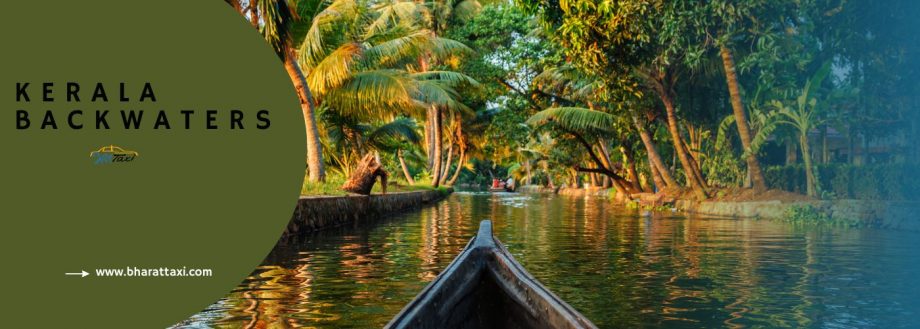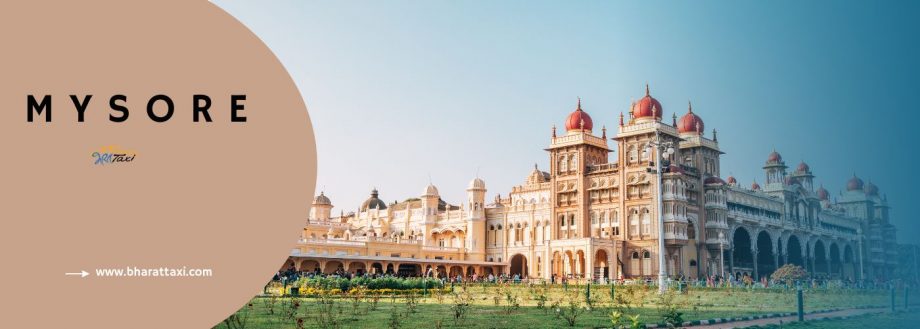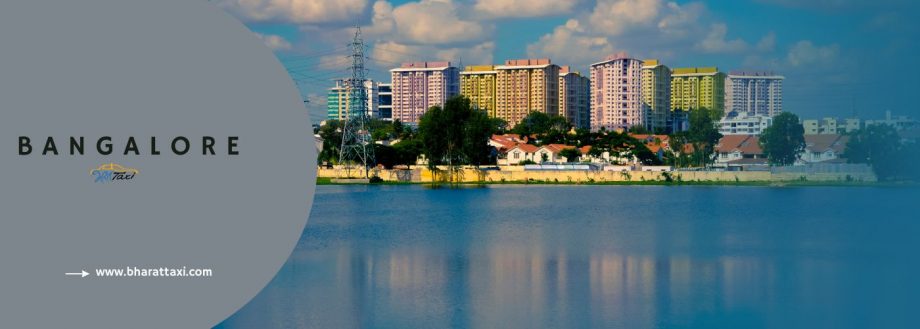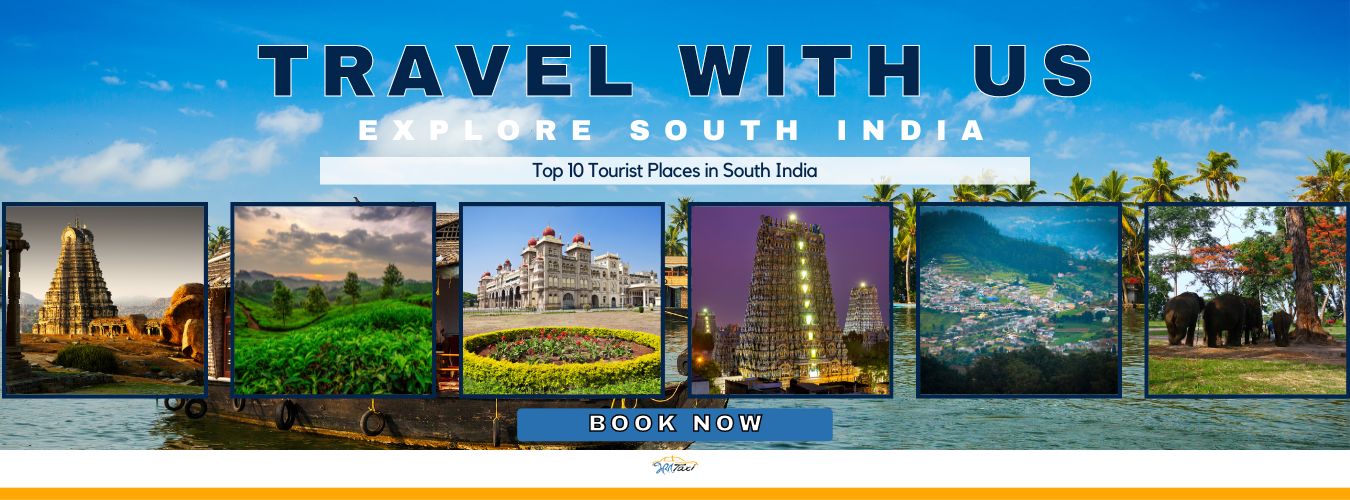Last Updated on May 26, 2024 by admin
Tourism professionals who want to see a wide range of cultures, beautiful natural scenery, and traditional ways of life are urged to go to South India. The foggy hills of Coorg and the hot beaches of Kerala are just two of the amazing things that can happen in this area. South India has a lot of different places to visit. A feeling of spiritual peace can be found in its beautiful temples, an exciting encounter with the local wildlife, or a taste of peace in its rolling tea plantations.
Are you interested in the beautiful ruins of places that were once powerful or the calm beauty of backwaters that flow through green and greener landscapes? This blog post lists the ten best places to visit in South India. Every single one of them gives you a different view of the heart of this interesting area. You should be ready to go on a trip that will help you find clues from the past. The beauty of nature will amaze you, and every turn will bring you an adventure. Let’s see our suggestions for the top 10 tourist places in South India: –
Explore the Top 10 Tourist Places in South India
South India is home to historical and natural views while touring there. Here are the most popular things to do in popular places:
1. Kerala Backwaters (Kerala)

In the beautiful Kerala Backwaters, you can glide through a world of peace and quiet. Along the Malabar Coast, this huge system of canals, ponds, lakes, and rivers connects to each other and shows a fascinating and one-of-a-kind way of life.
Location: Lush network of canals and waterways weaving through Kerala’s verdant landscapes.
What to See and Do:
i. Houseboat Adventures: Take a trip on a traditional houseboat, also known as a Kettuvallam. With their thatched roofs and private balconies, these beautifully made wooden boats are a comfortable and one-of-a-kind way to see the backwaters. Watch different kinds of birds fly through the marshes, local fishermen cast their nets, and the lively life is happening by the water.
ii. Village Exploration: Get off your houseboat and enjoy the beauty of Kerala’s villages. Check out the local markets that are full of fresh food and unique gifts made by hand. Talk to nice people in the area and find out how they live.
iii. Delicious Foods: On your backwater trip, enjoy the tasty foods of Kerala. Enjoy fresh seafood curries, fluffy appams (rice pancakes), and vegetarian meals that smell great. For a truly authentic dining experience, many houseboats have chefs who can make traditional Kerala food.
iv. Witnessing Craftsmanship: Watch the interesting process of making Kettuvallam. These carefully designed houseboats are made by hand using materials and methods that are native to the area.
Why You Should Visit:
i. Experience a Unique Way of Life: Get lost in the peace and quiet of the backwaters, far from the noise and chaos of the city. See a traditional way of life where water is important to everyone.
ii. Stunning Natural Beauty: Kerala has some of the most beautiful scenery in the world. Watch the beautiful tapestry of nature unfold as you glide through bright green paddy fields surrounded by swaying coconut palms.
iii. Rich Culture and Tradition: On your trip through the backwaters of Kerala, learn about the state’s rich culture and customs. You can learn about the backwaters’ past and importance, and you can see traditional arts performances like Kathakali dances.
Other Tips: Opt for an overnight stay on a houseboat for a truly magical experience. Imagine waking up to the gentle lapping of water and the sounds of nature, a truly unforgettable way to connect with the serenity of the backwaters.
2. Hampi (Karnataka)

The open-air museum of Hampi, which is located in Karnataka and is surrounded by granite rocks that are remarkable, attracts both history enthusiasts and explorers. Hampi, which originally served as the magnificent capital of the Vijayanagara Empire from 1336 to 1565, is now a compelling witness to an era that has long since passed. It is the second-best option during a trip to the top 10 tourist places in South India.
What to See and Do:
i. Virupaksha Temple: This is one of the oldest temples in Hampi that is still used. It is a beautiful group of temples with lots of intricate carvings. See the huge gopurams (entrance towers) and be amazed by the intricate sculptures that show stories from Hindu mythology.
ii. Vittala Temple Complex: Visit the amazing Vittala Temple, which is famous for its famous stone chariot and beautifully carved singing pillars. When you tap on each pillar, it makes a beautiful melody, showing how smart the builders were during the Vijayanagara period.
iii. Elephant Stables: The huge Elephant Stables used to house the emperor’s beautiful elephants. They make you think of the grandeur of the royal court.
iv. Hemakuta Hill: Hike up this sacred hill offering panoramic views of the entire Hampi landscape. Explore the cluster of temples dedicated to various Hindu deities that dot the hilltop.
v. Matanga Hill: As you climb Matanga Hill, you can see the beautiful sunrise over the ruins. Along the way, check out the huge statue of Ganesha and the old cave churches.
vi. Lotus Mahal: Admire the unique architectural style of this lotus-shaped palace, believed to have been used by the royal women.
Why You Should Visit:
i. Step Back in Time: Through the ruins of a great kingdom, you can feel the pulse of a time gone by. In Hampi, you can see some of the most amazing architecture, art, and cultural legacy of the Vijayanagara period.
ii. Architectural Marvels: The temples and landmarks have beautiful stonework, carvings, and gopurams that are very tall and very detailed.
iii. Unique Landscape: Look at how the old ruins look so different from the dramatic granite boulders and the calm Tungabhadra River.
iv. Spiritual Significance: Hampi is still a busy place of worship. Witness lively Hindu ceremonies and feel the spiritual energy of the Virupaksha Temple.
Other Tips:
- Hire a local guide to gain deeper insights into the history, mythology, and significance of the monuments.
- Consider purchasing a combo ticket for entry into multiple monuments to save time and money.
- The best time to visit Hampi is between October and March, when the weather is pleasant.
- Carry comfortable shoes for exploring the vast ruins and uneven terrain.
3. Munnar (Kerala)

Munnar, nestled amidst the verdant hills of Idukki district in Kerala, is a haven for nature lovers and adventure seekers alike. Often referred to as the “Kashmir of South India,” this hill station boasts breathtaking landscapes carpeted with sprawling tea plantations, making it a picture-perfect escape.
What to See and Do:
i. Tea Trail: Embark on a scenic journey through Munnar’s sprawling tea estates. Witness the rolling hills dotted with emerald green tea bushes and learn about the fascinating process of tea production. Take a refreshing sip of freshly brewed tea amidst the captivating scenery.
ii. Echo Point: Experience the wonder of nature’s acoustics at Echo Point. Stand at a designated spot and shout – your voice will be magically echoed back from the surrounding hills.
iii. Eravikulam National Park: Home to the endangered Nilgiri Tahr (mountain goat) and the highest peak in South India, Anamudi Peak (2,695 meters), Eravikulam National Park offers a thrilling trekking experience. Keep an eye out for the rare Neelakurinji flower, which blooms a mesmerizing blue only once every 12 years.
iv. Mattupetty Dam: Nestled amidst picturesque hills, Mattupetty Dam is a popular spot for boating and enjoying scenic beauty. Hire a pedal boat and explore the serene waters, surrounded by lush greenery.
v. Kundala Lake: The largest natural lake in Kerala, Kundala Lake offers opportunities for boating, horse riding, and enjoying breathtaking sunsets.
Why You Should Visit:
i. Escape the Heat: Munnar’s cool and refreshing climate provides a welcome respite from the scorching South Indian sun.
ii. Nature’s Paradise: Immerse yourself in the beauty of rolling hills, cascading waterfalls, and sprawling tea plantations.
iii. Adventure Activities: Hike through verdant trails, go boating on serene lakes, or spot wildlife in Eravikulam National Park.
iv. Cultural Delights: Explore Munnar’s colonial past through its historical sites and experience the warmth of Keralite hospitality.
Other Tips: The best time to visit Munnar is from September to May when the weather is pleasant and comfortable for outdoor activities. If you’re lucky enough to visit during the blooming season (every 12 years), witnessing the Neelakurinji flower is an unforgettable experience.
4. Mysore (Karnataka)

Mysore, also known as Mysuru, is the cultural capital of Karnataka and a dazzling jewel in the crown of South India. This captivating city, nestled at the base of the Chamundi Hills, boasts a rich heritage, magnificent palaces, and vibrant cultural experiences that will leave you spellbound.
What to See and Do:
i. Mysore Palace: Immerse yourself in royalty at the opulent Mysore Palace, adorned with intricate carvings and boasting a blend of architectural styles. Witness the grandeur of the illuminated palace during the Dussehra festival (usually in September or October).
ii. Sri Chamarajendra Zoological Gardens: Commonly known as Mysore Zoo, this is one of the oldest and most respected zoos in India. Encounter a diverse range of animals, from majestic tigers to playful monkeys.
iii.Jaganmohan Palace: Explore this beautiful 19th-century palace, now converted into an art gallery showcasing a collection of paintings, sculptures, and artifacts.
iv. Devaraja Market: Immerse yourself in the bustling Devaraja Market, a treasure trove of spices, sandalwood products, local handicrafts, and fresh produce.
v. Somnathpur Temple: Marvel at the architectural brilliance of the 12th-century Somnathpur Temple, a UNESCO World Heritage Site adorned with intricate sculptures depicting scenes from Hindu mythology.
vi.Chamundeshwari Temple: Ascend the Chamundi Hills and seek blessings at the revered Chamundeshwari Temple, offering panoramic views of the city below.
Why You Should Visit:
Mysore is a city that caters to diverse interests. History buffs will be enthralled by its magnificent palaces and ancient temples, while nature lovers can find solace in its serene gardens. Foodies will delight in the city’s delectable cuisine, known for its aromatic curries and melt-in-your-mouth Mysore Pak.
Other Tips:
- Witness the spectacular Mysore Dasara, a ten-day festival culminating in a vibrant procession with decorated elephants, cultural performances, and dazzling fireworks.
- Take a walk along the Brindavan Gardens, famed for its musical fountains and beautifully landscaped floral arrangements.
5. Madurai (Tamil Nadu)

Madurai, a vibrant city situated on the banks of the Vaigai River in Tamil Nadu, is a must-visit destination for anyone seeking a deep dive into South Indian culture and history. Often referred to as the “Athens of the East,” Madurai boasts a rich tapestry of architectural marvels, ancient traditions, and a soul-stirring spiritual aura.
What to See and Do:
i. Meenakshi Amman Temple: The crown jewel of Madurai is the magnificent Meenakshi Amman Temple, a Dravidian architectural masterpiece. Be awestruck by its 14 colorful gopurams (gateway towers) adorned with intricate carvings depicting mythological tales. Witness the daily temple rituals and participate in the vibrant Meenakshi-Sundareswarar wedding ceremony during the April festival (Chithirai Festival).
ii. Thirumalai Nayakkar Mahal: This 17th-century palace, built by the Nayaka dynasty, is a testament to the architectural prowess of that era. Explore its grand halls, admire the intricate inlay work, and be captivated by the stunning light and sound show held in the evenings.
iii. Gandhi Museum: Immerse yourself in the life and legacy of Mahatma Gandhi at this museum housed in his former residence. Explore Gandhi’s personal belongings, photographs, and documents that showcase his fight for India’s independence.
iv. Aalaiya Aachi Mariamman Temple: This colorful temple dedicated to Goddess Mariamman is a visual treat. Witness the vibrant artwork, participate in the daily aarti (prayer ceremony), and soak in the spiritual atmosphere.
v. Explore the Markets: Immerse yourself in the bustling energy of Madurai’s markets. From the vibrant flower market (Poo Market) to the spice markets overflowing with exotic aromas, a shopping spree in Madurai is a sensory experience. Don’t miss the opportunity to bargain and pick up unique souvenirs like handcrafted textiles, bronze statues, and local spices.
Why You Should Visit:
Madurai is more than just a tourist destination; it’s a city that pulsates with life and tradition. Here’s why you should include Madurai in your South Indian itinerary:
i. Spiritual Significance: Madurai is a major pilgrimage center for Hindus, offering a chance to experience the depth and devotion of South Indian religious practices.
ii.Architectural Marvels: Witness the architectural brilliance of Dravidian temples and palaces, each a masterpiece in itself.
iii. Vibrant Culture: Immerse yourself in the lively festivals, colorful markets, and traditional dance performances that showcase the rich cultural heritage of Tamil Nadu.
iv. Foodie Paradise: Madurai offers a delectable culinary scene. From the iconic Madurai idly (rice cakes) and piping hot filter coffee to flavorful vegetarian curries and street food stalls, your taste buds will be tantalized.
Other Tips: Plan your visit to coincide with the Chithirai Festival (April) to witness the spectacular Meenakshi-Sundareswarar wedding ceremony, a vibrant and unforgettable cultural experience.
6. Ooty (Tamil Nadu)

Nestled amidst the verdant embrace of the Nilgiri Hills in Tamil Nadu, Ooty, also known as Udagamandalam, is a captivating hill station brimming with colonial charm and natural splendor. Often referred to as the “Queen of Hills,” Ooty has allured travelers for centuries with its breathtaking scenery, salubrious climate, and unique experiences.
What to See and Do:
i. Embrace the Panoramic Views: Take a scenic ride on the Nilgiri Mountain Railway, considered the steepest track in Asia, and marvel at the breathtaking vistas of the Nilgiris.
ii. Explore Lush Botanical Delights: Immerse yourself in the vibrant tapestry of flora at the Government Botanical Garden, housing over 1,000 species of plants and trees spread across 55 acres.
iii. Unwind by the Lake: Enjoy a leisurely stroll or a boat ride on Ooty Lake, a serene artificial lake surrounded by rolling hills, offering a picture-perfect escape.
iv. Witness Historical Charm: Step back in time at landmarks like the 19th-century Stone House and St. Stephen’s Church, showcasing colonial-era architecture.
v. Adventure Awaits: For the thrill-seekers, Ooty offers exciting activities like trekking through rolling hills, mountain biking on scenic trails, and indulging in boating on Pykara Lake.
Why You Should Visit:
i. Escape the Heat: Ooty’s cool and pleasant climate, especially during summers, provides a welcome respite from the scorching Indian heat.
ii. Experience Colonial Charm: Immerse yourself in the remnants of the British Raj era reflected in the architecture, toy train, and the overall ambience of Ooty.
iii. Nature’s Paradise: Ooty boasts breathtaking natural beauty with rolling hills, cascading waterfalls, and sprawling tea plantations offering a visual feast for nature lovers.
iv. Family-Friendly Fun: Ooty caters to families with its diverse attractions – boating, toy train rides, serene gardens, and opportunities to reconnect with nature.
Other Tips: The best time to visit Ooty is between September and March when the weather is pleasant and offers clear skies for enjoying panoramic views.
7. Coorg (Karnataka)

Coorg, also known as Kodagu, is a captivating hill station nestled amidst the lush green mountains of Karnataka. Often referred to as the “Scotland of India” for its rolling hills, misty landscapes, and pleasant weather, Coorg offers a charming escape for nature lovers and adventure seekers alike.
What to See and Do:
i. Immerse Yourself in Nature: Trek through verdant forests, explore cascading waterfalls like Abbey Falls and Irupu Falls, or simply relax amidst the serene beauty of coffee plantations. Breathe in the fresh mountain air and soak in the tranquility of Coorg’s natural splendor.
ii. Coffee Connoisseur’s Paradise: Coorg is India’s leading coffee producer. Visit a coffee plantation, learn about the coffee-making process, and indulge in a cup of freshly brewed Coorg coffee, known for its rich aroma and flavor.
iii. Adventure Activities: Coorg offers exciting adventure activities like white water rafting on the River Cauvery, ziplining through the hills, or mountain biking on scenic trails. Get your adrenaline pumping and experience the thrill of Coorg’s adventure scene.
iv. Explore Dubare Elephant Camp: Located on the banks of the Cauvery River, the Dubare Elephant Camp is a unique experience. Watch trained elephants take a refreshing bath in the river, learn about their care and behavior, or even take a gentle ride through the forest on an elephant’s back.
v. Cultural Delights: Immerse yourself in the rich Kodava culture, known for its martial arts traditions and hospitality. Visit traditional Kodava homes, sample the local cuisine featuring flavorful spices and fresh ingredients, and witness vibrant folk performances.
Why You Should Visit:
Coorg offers a perfect blend of natural beauty, adventure activities, and cultural experiences. Whether you seek relaxation amidst rolling hills, a taste of authentic coffee culture, or a thrilling adventure, Coorg has something for everyone.
Other Tips: The best time to visit Coorg is from October to February when the weather is pleasant and dry. During this period, you can also experience the vibrant Coorg Festival, showcasing the region’s rich culture and traditions.
8. Alleppey (Kerala)

Alleppey, also known as Alappuzha, is a coastal town in Kerala famed for its enchanting network of canals and backwaters. Often called the “Venice of the East,” Alleppey offers a unique and unforgettable experience, perfect for travelers seeking tranquility amidst captivating natural beauty.
What to See and Do in Alleppey:
i. Glide Through the Backwaters: Embark on a houseboat cruise, a quintessential Alleppey experience. Drift along tranquil canals, spotting diverse birdlife and witnessing the serene beauty of Kerala’s verdant landscapes.
ii. Explore Charming Villages: Hop off your houseboat and delve into the heart of Kerala’s villages. Witness the traditional way of life, interact with friendly locals, and witness the art of coir making, a specialty of the region.
iii. Unwind on Pristine Beaches: Alleppey boasts a beautiful coastline with serene beaches. Relax under the warm sun, take a refreshing dip in the Arabian Sea, or indulge in water sports like surfing or kayaking.
iv. Delve into History and Culture: Visit the intriguing Krishnapuram Palace, showcasing the architectural heritage of Kerala. Explore the Mullakkal Temple, a significant Hindu pilgrimage site, and immerse yourself in the vibrant local culture.
v. Witness Snake Boat Races: If you’re visiting Alleppey during the monsoon season (June-September), don’t miss the thrilling snake boat races, a traditional display of skill and power.
Why You Should Visit Alleppey:
i. Experience Backwaters Paradise: Alleppey offers a one-of-a-kind opportunity to explore Kerala’s backwaters, a serene haven untouched by modern chaos.
ii. Unwind in Picturesque Beauty: Immerse yourself in the captivating natural beauty of Alleppey, from its serene backwaters to its pristine beaches.
iii. Embrace Rich Culture and Tradition: Alleppey boasts a vibrant culture with ancient temples, traditional art forms, and a unique way of life waiting to be explored.
Other Tips: Consider booking a homestay in a local village for an authentic experience of Alleppey’s culture and cuisine.
9. Pondicherry (Puducherry)

Pondicherry (Puducherry), a captivating blend of French colonial charm and vibrant Indian culture, is a unique gem in South India. Once a French colony, the city retains a distinct European atmosphere with its mustard-colored colonial buildings, tree-lined boulevards, and charming cafes. Here’s what awaits you in this enchanting destination:
What to See and Do in Pondicherry:
i. French Quarter: Immerse yourself in the colonial legacy by strolling through the French Quarter. Admire the well-preserved architecture, shop for souvenirs in chic boutiques, and savor French delicacies in charming cafes.
ii. Auroville: Experience a global utopia at Auroville, an experimental township promoting peace and human unity. Visit the Matrimandir, a silent meditation center, and explore the community’s various sustainable living initiatives.
iii. Promenade Beach: Relax and unwind on the scenic Promenade Beach, a popular spot for locals and tourists alike. Enjoy a leisurely walk along the Bay of Bengal, watch the sunset paint the sky with vibrant hues, or try your hand at water sports.
iv. Spiritual Delights: Explore Pondicherry’s rich spiritual heritage. Visit the Arulmigu Manakula Vinayagar Temple, a Hindu shrine dedicated to Lord Ganesh, or marvel at the intricate architecture of the Basilica of the Sacred Heart of Jesus.
v. Serenity Beach: Escape the crowds and find tranquility at Serenity Beach. This pristine beach offers stunning views, calm waters, and a laid-back atmosphere, perfect for relaxation and reflection.
vi. French Food Delights: Indulge in your inner gourmand and savor the unique culinary scene of Pondicherry. French bakeries offer delectable pastries and croissants, while restaurants serve a fusion of French and South Indian flavors. Don’t miss out on freshly caught seafood dishes!
Why You Should Visit:
Pondicherry offers a unique experience unlike any other in South India. Whether you’re a history buff seeking a glimpse into French colonial India, a spiritual seeker drawn to its diverse religious sites, or a beach bum yearning for relaxation, Pondicherry has something for everyone. The city’s charm lies in its ability to seamlessly blend the past and present, East and West, creating an unforgettable travel experience.
10. Bangalore (Karnataka)

Bangalore, officially known as Bengaluru, is the capital of Karnataka and a vibrant metropolis pulsating with a unique blend of old-world charm and modern energy. Often dubbed the “Garden City” or the “Silicon Valley of India,” Bangalore offers a diverse experience for every traveler.
Unveiling the City’s Layers:
i. Modern Marvel: Immerse yourself in the heart of India’s IT revolution. Explore the bustling business districts with towering skyscrapers, housing global tech companies. Visit renowned museums like the National Museum or the Indian Institute of Science for a glimpse into India’s scientific and technological advancements.
ii. A Legacy in Stone: Bangalore boasts a rich history waiting to be explored. Visit the magnificent Bangalore Palace, modeled after Windsor Castle, and be transported to a bygone era. Admire the architectural grandeur of Vidhana Soudha, the seat of the state legislature, built in the Neo-Dravidian style.
iii. A Breath of Fresh Air: Escape the urban buzz and find solace in Bangalore’s verdant gardens. Lalbagh Botanical Garden, established in 1760, is a sprawling haven with over 1,800 species of plants. Cubbon Park, another historical landmark, offers a peaceful retreat amidst the cityscape.
iv. A Culinary Paradise: Tantalize your taste buds with Bangalore’s delectable cuisine. From authentic South Indian fare like dosa and idli to international flavors from around the world, the city caters to every palate. Explore the vibrant street food scene or indulge in a fine-dining experience at a renowned restaurant.
Why Bangalore Should Be on Your Itinerary:
Bangalore offers a unique contrast, allowing you to experience the dynamism of a modern city alongside the serenity of its historical and natural treasures. Whether you’re a history buff, a nature lover, or a foodie, Bangalore has something to offer everyone.
Other Tips: Take a ride on a vintage bike taxi (Nandi Bull) for a unique and affordable way to explore the city.

